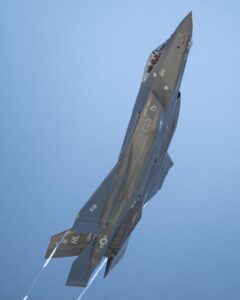
The U.S. Air Force Sustainment Center's branch office at Robins AFB, Ga., is considering a possible contract to provide engineering support for Initial Operational Capability of the Operational Flight Programs of the Lockheed Martin [LMT] F-35 fighter's AN/APG-81 active electronically scanned array radar and AN/AAQ-37 Distributed Aperture System (DAS)--both by Northrop Grumman [NOC]. The Aug. 10 Request for Information's Performance Work Statement (PWS) said that the latter would establish "government organic capability" of the APG-81 and AAQ-37 for the Air…














